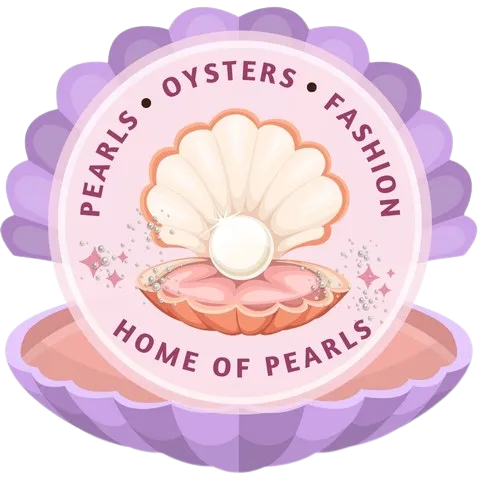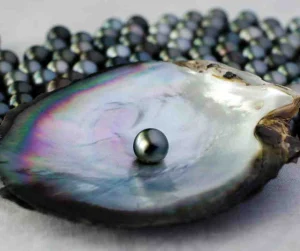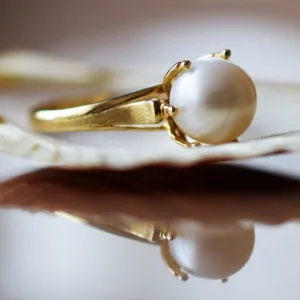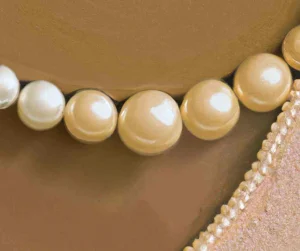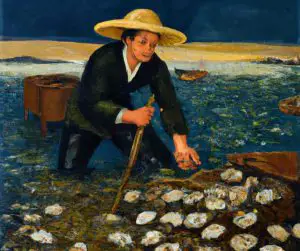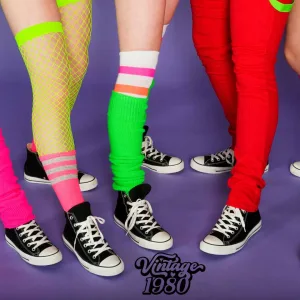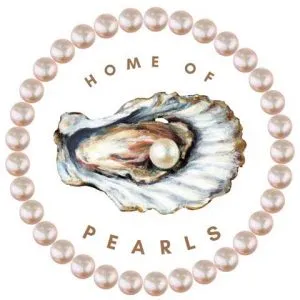Biwa pearls are so named because they come from Lake Biwa in Japan. They have become so synonymous with other freshwater pearls that many people call all freshwater pearls Biwa pearls. Production of the pearls has all but ceased, so if you have some jewelry that contains Biwa pearls, you should probably keep them because they are very valuable. Biwa pearls also have an interesting history that you can learn about now.
Table of Contents
Natural vs. Cultured Pearls
Natural pearls are pearls that occur naturally in certain mollusks when a foreign object gets inside of a mollusk shell and layers of nacre are formed in order to defend itself against it.
Cultured pearls are made because the foreign object is intentionally introduced into the shell, but the end results are the same – a beautiful real pearl. For all practical purposes, Kokichi Mikimoto is responsible for the popularity and growth of cultured pearls, and it involved Biwa pearls.
When Mikimoto first started his business venture, he experimented in Lake Biwa, concentrating on mussels instead of clams, and on tissue irritants in the mantle area instead of the usual beaded nuclei.
In practical terms, this means that he had success in his endeavor and an abundance of cultured pearls was the result. The pearls also came out in many interesting colors and with a much higher iridescence than most other pearls have.
The experiments Mikimoto conducted resulted in mussels that could produce more than one freshwater pearl in their shells. The pearls were also made out of solid nacre, so they were very durable and offered lots of beauty and luster.
At this point, Biwa pearls were also very affordable, but soon after Biwa pearls started to take over the freshwater pearl market, their numbers started to dwindle a little. Today, Lake Biwa is too polluted to produce cultured pearls, and the competition from China has resulted in a large supply of these types of pearls.
What About Now?
As of now, true Biwa pearls are rare. If you want real Biwa pearls that come from Lake Biwa, you’ll have to look for some that have been around awhile, not a newer one because it doesn’t exist.
Since many people call all freshwater pearls Biwa pearls, it can get a bit confusing. But if you want true Biwa pearls, they might be hard to find. In fact, most people who are looking for Biwa pearls today are either collectors or interested in vintage jewelry.
You can usually recognize Biwa pearls because many of them have a stick-like shape. Biwa pearls are usually long and bumpy in shape, but of course, that doesn’t mean that all long and bumpy pearls are Biwa pearls.
Sometimes, pearls called Biwa pearls are not Biwas at all; they are simply pearls that are irregular in shape like the Biwa pearls are. This makes it even more difficult for those who are trying to find pearls that actually come from Lake Biwa in Japan.
What Do Biwa Pearls Look Like?
Once again, Biwa pearls are usually irregular in shape. They can be slightly round but aren’t usually a perfectly round shape. They tend to be longer and smaller than a lot of other pearls, and most of them are either white or off-white in color.
That being said, it’s possible to find Biwa pearls that are other colors, including peach, gray, yellow, or even pink. While the pearls can be used in bracelets, necklaces, and pendants, they are most often used in “stud” earrings, possibly because of their small size.
Interestingly, there are also numerous beliefs associated with Biwa pearls. They are thought to protect children from harm, offer wisdom, cement relationships and make them stronger, and provide luck, money, and safety. In more ways than one, Biwa pearls are thought to bring many positive things to a person’s life.
They are also thought to increase fertility, heal the digestive tract, and encourage perfect health, among other things.
These days, Biwa pearls are usually very affordable and often paired with other gems, including emeralds or amethysts. They are gorgeous pearls that come in a variety of shapes and colors, and there are still pearls coming from China that are called Biwa pearls, even though these pearls are not real Biwa pearls because they do not come from Lake Biwa in Japan.
Conclusion
Biwa pearls are no longer produced, but that doesn’t mean they are expensive to purchase. While they are gorgeous pearls, there were tons of them produced at one time, so you can sometimes buy them online.
These are relatively small pearls that are usually long and shaped like a grain of rice, and they can be pink, yellow, gray, or of course, white.
Found mostly in earrings and surrounded by either gold or silver, their natural iridescent quality makes them a favorite for many people who love pearls, including collectors and those who love vintage jewelry.
